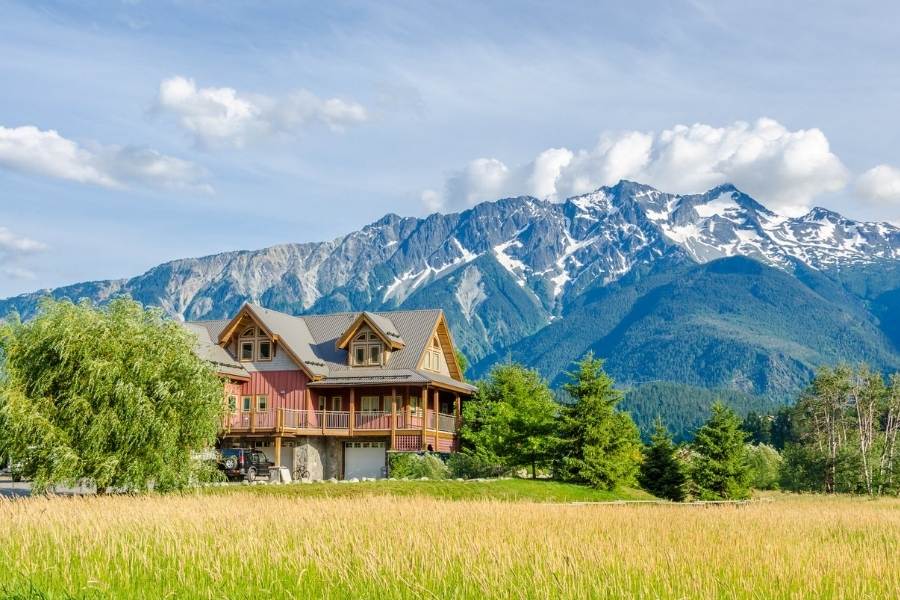
Mountain living is a wonderful experience for many Americans. Many people are drawn to the aesthetic appeal of living or vacationing in America’s Mountain ranges from breathtaking scenery, crystal lakes, and drastic mountainous backdrops. In the midst of the thrill of moving to the mountains, many people commonly overlook the unique insurance coverages needed for residences in the mountains.
Residences in the mountains are often left exposed to a multitude of natural events. These can range from wildfires, floods, and landslides. Owners of residences in the mountains need to know what unique insurance coverage is necessary to safeguard their homes. At Centennial State Insurance Agency, we pride ourselves in addressing your insurance needs and aim to protect and inform you of what coverages you need to ensure your peaceful home, or luxurious mountain cabin, is kept safe and sound. Thus, this article aims not to create fear, but rather to inform you of the possible insurance coverages your home may need to be adequately protected.
What Type of Insurance Do I Need for Living in the Mountains?
Insurance for homes in the mountains needs to be tailored for the unique circumstances homes in the mountains may face. U.S. News explained there are “five commonly overlooked aspects that should be thoughtfully considered when moving from lower altitude states directly into the Rocky Mountains or similar high-altitude ranges.” The first is the climate your mountain home is located in, what level of elevation your house is at, the amount of traffic surrounding your home, the seasons experienced, and the wildlife surrounding the area.
In addition to these practical considerations, a basic homeowner’s policy usually does not cover disasters that may occur to your mountain home. A recent report from Insurance Information Institute found the following disasters, which are more common with a mountain home, are not covered in a basic homeowners policy:
- Damages caused by the weight of snow, ice, or sleet. Such damage is usually counted as a loss against the homeowner and not included in a basic policy.
- “Freeze of a plumbing, heating, air conditioning, or automatic, fire-protective sprinkler system, or a household appliance.”
- “All perils except flood, earthquake, war, nuclear accident, landslide, mudslide, sinkhole, and others specified in your policy.”
When purchasing a house in the mountains, you need to ensure you have, at a minimum, flood insurance, if applicable, wildfire insurance; and landslide insurance.
Flood Insurance for Your Mountain Home
You may be wondering, “I am moving to the mountains; why do I need flood insurance up here?” Well, the reality is, if your home is located near a body of water in the mountains, you should strongly consider adding flood insurance to your insurance policy. A flood can always be a possibility when you live near a body of water. Despite purchasing a home in the mountains, your home may still be in a flood zone, such that a mortgage lender may still require flood insurance, even if you are moving to a town.
In fact, Lizzie Litzow, a spokesperson for the Federal Emergency Management Agency, stated, “Flooding is the most common and costly natural disaster. . . [j]ust 1 inch of water can cause up to $25,000 in damage to a home or apartment.” Because mountain homes are just that, homes located in the mountains and not on the ocean or locations where people usually are keenly aware flood insurance is needed, it does not reduce the risk of flooding to your mountain home if it is near a body of water.
Wildfire Insurance for Your Mountain Home
Wildfire insurance, especially for mountain homes located in the western part of the United States, is an important insurance coverage to add to your policy. Insurance premiums for communities, businesses, and homeowners, according to the U.S. Department of Agriculture, are “based on numerous factors and inputs of actuarial science. Some of those inputs include the quantity and history of claims in an area, the location itself, property value.” The U.S. Department of Agriculture furthered that “[w]hile not directly, studies have linked climate change to another risk factor considered in calculating property insurance premiums. . .wildfire.”
Specifically in the western United States, recent wildfires trends show the wildfires intensifying as time goes on. The U.S. Department of Agriculture additionally found that in 2020, “there were 58,950 wildfires, affecting 10.1 million acres, in contrast to 18,229 wildfires and 1.3 million acres affected in 1983.” As a result, the “ever-growing risk to companies, communities and private landowners has drastically increased insurance premiums for properties at risk of wildfire, and it is expected that those premiums will only continue to rise, making insurance policies unaffordable for many.” For instance, some homes in the Rocky Mountain Region are located in the Red Zone, i.e., the zone deemed as a dangerous wildfire area. If you are purchasing a home in the mountain, you need to ensure you have expansive wildfire insurance coverage to tack onto your policy to ensure your home is covered in the event of a wildfire.
Landslide Insurance for Your Mountain Home
Perhaps on not often considered, your mountain home may additionally need insurance coverage if a landslide were to occur. “Landslides are more widespread than any other geological event,” the World Health Organization reported. The World Health Organization continued, explaining areas that are most vulnerable to landslides include:
- “Steep terrain, including areas at the bottom of canyons;
- land previously burned by wildfires;
- land that has been modified due to human activity, such as deforestation or construction;
- channels along a stream or river; [and]
- any area where surface runoff is directed or land is heavily saturated.”
In other words, per the World Health Organization’s report, mountainous regions are more prone to landslides than a home located on flat terrain. Since most basic home insurance policies do not cover landslides, you should pause and consider the benefits that would accompany additional coverage to protect your home should a landslide occur.
Living in the mountains is a wonderful lifestyle. You get to enjoy the beauty of the mountains coupled with the pleasant temperatures and stunning scenery. However, mountain homes face unique circumstances residences in other parts of the country do not have to address, such as floods, wildfires, and landslides. We here at Centennial State Insurance Agency are ready to address all your mountain home’s insurance needs and ensure you can enjoy your mountain lifestyle knowing your home is fully protected.
